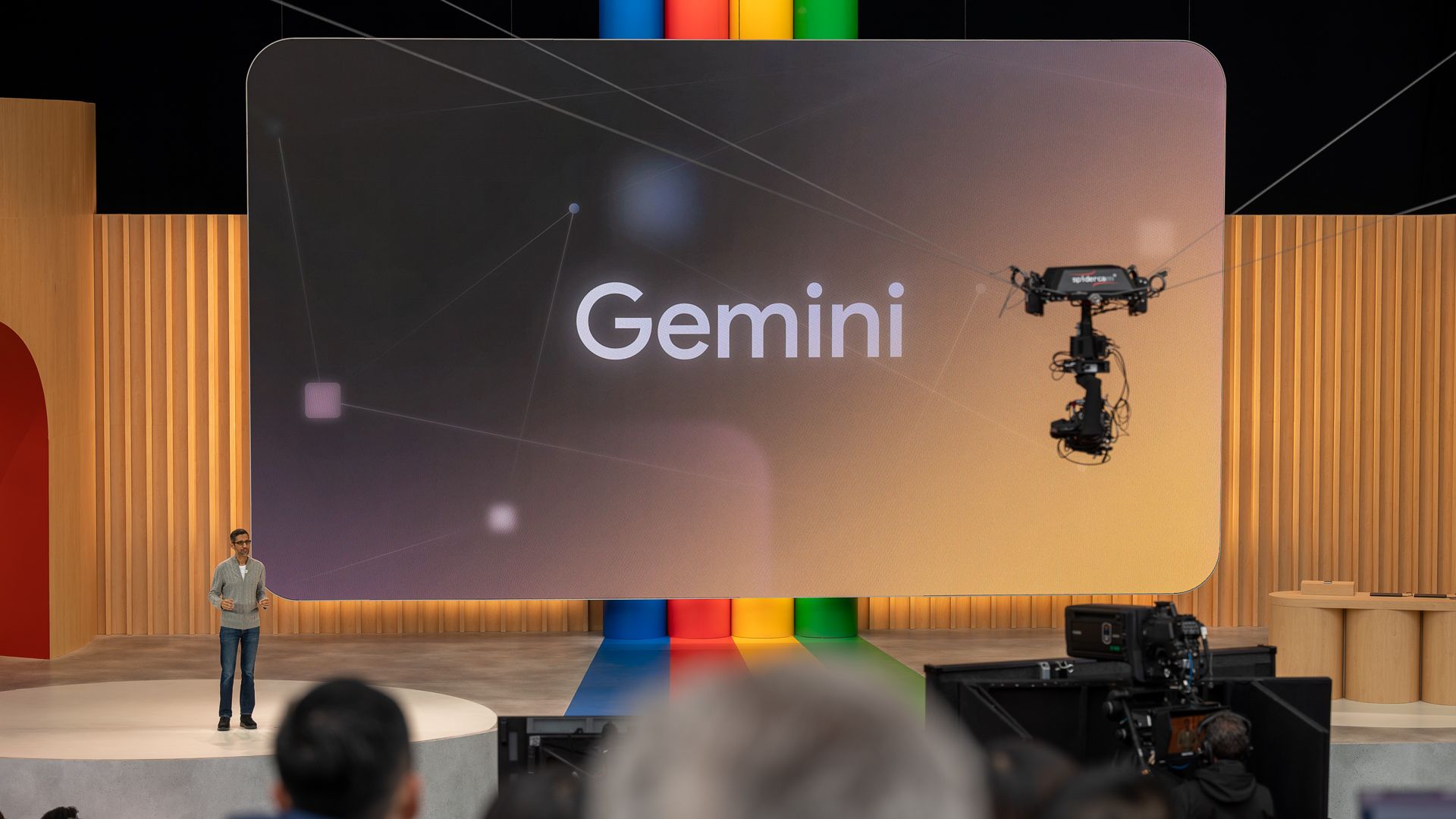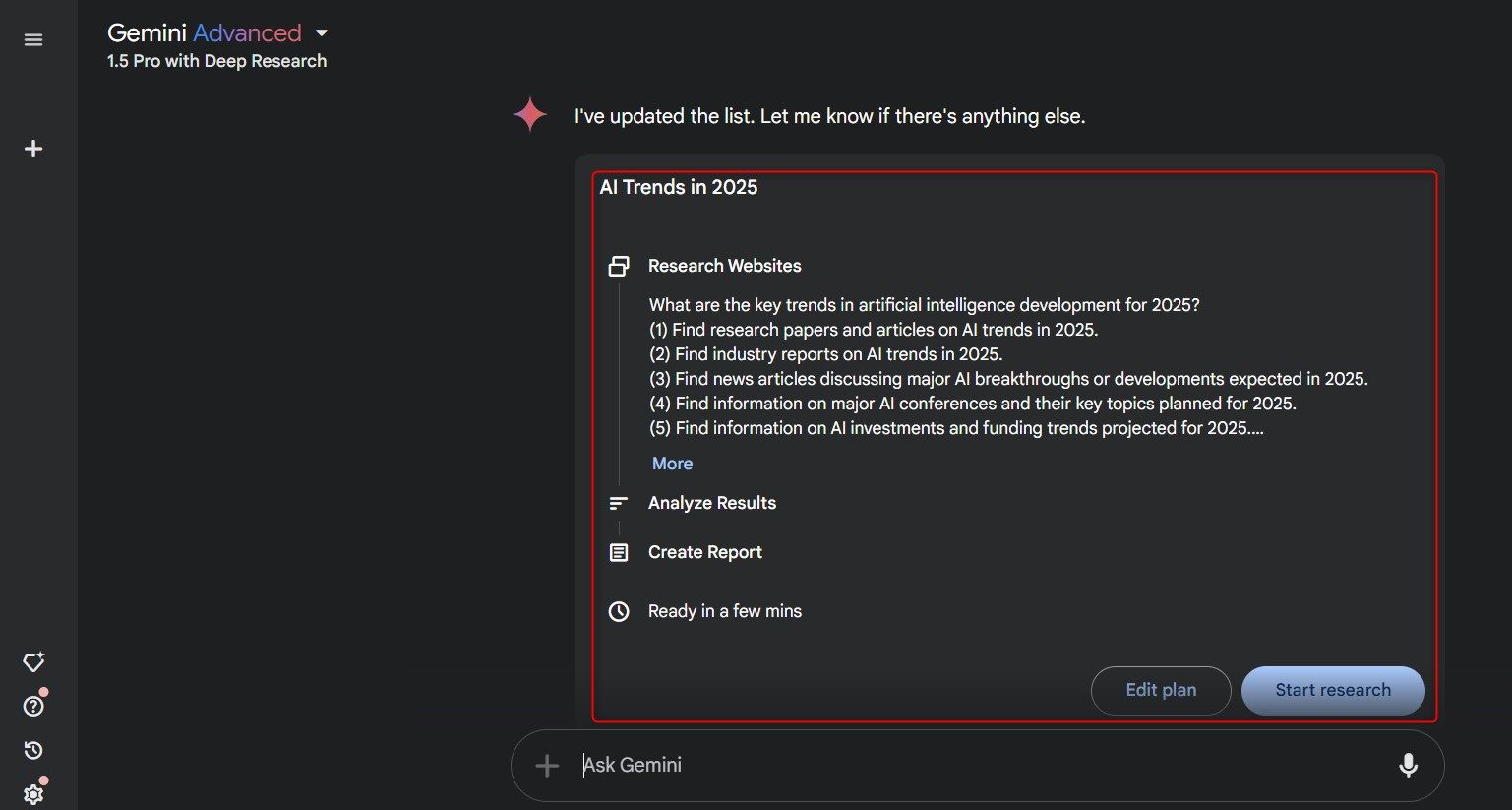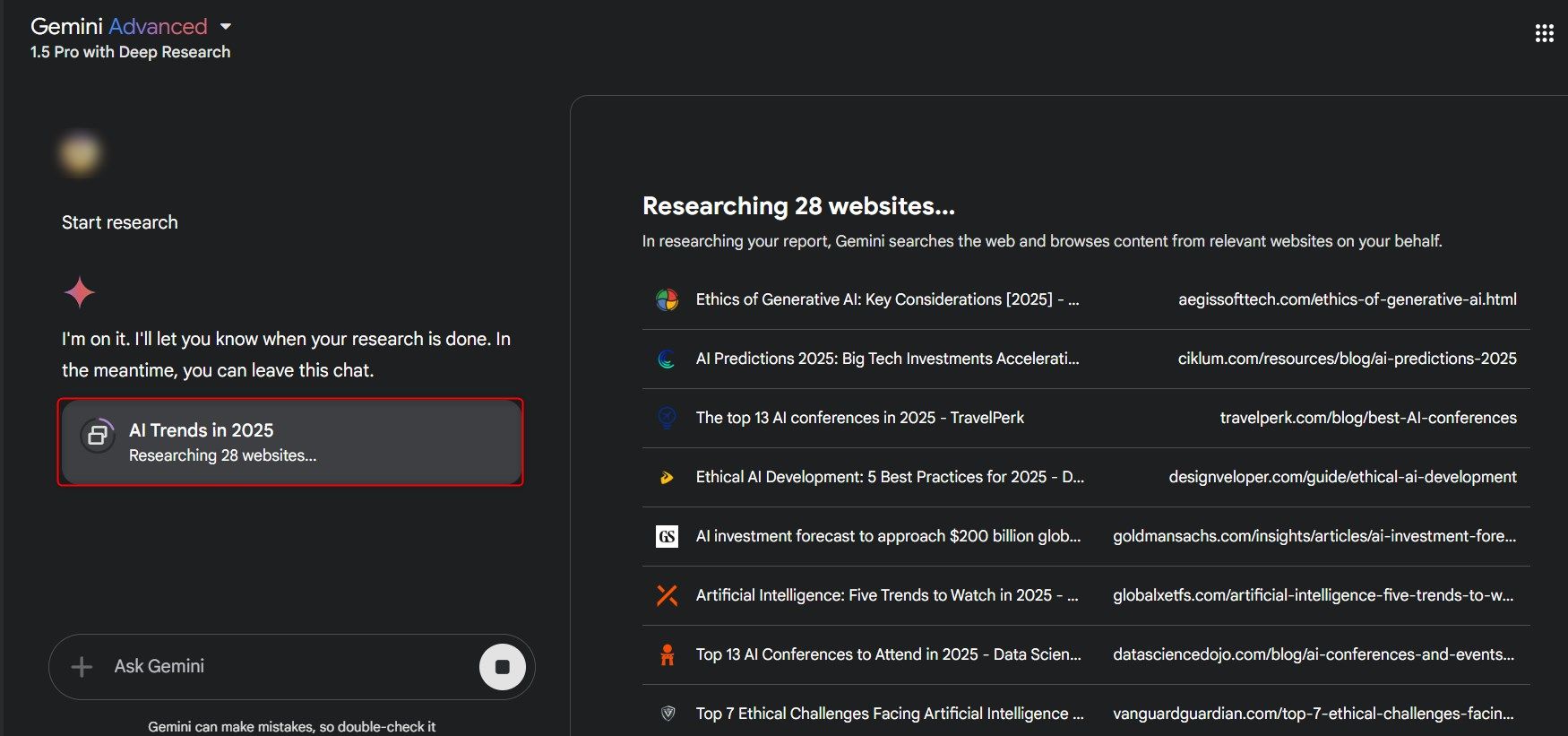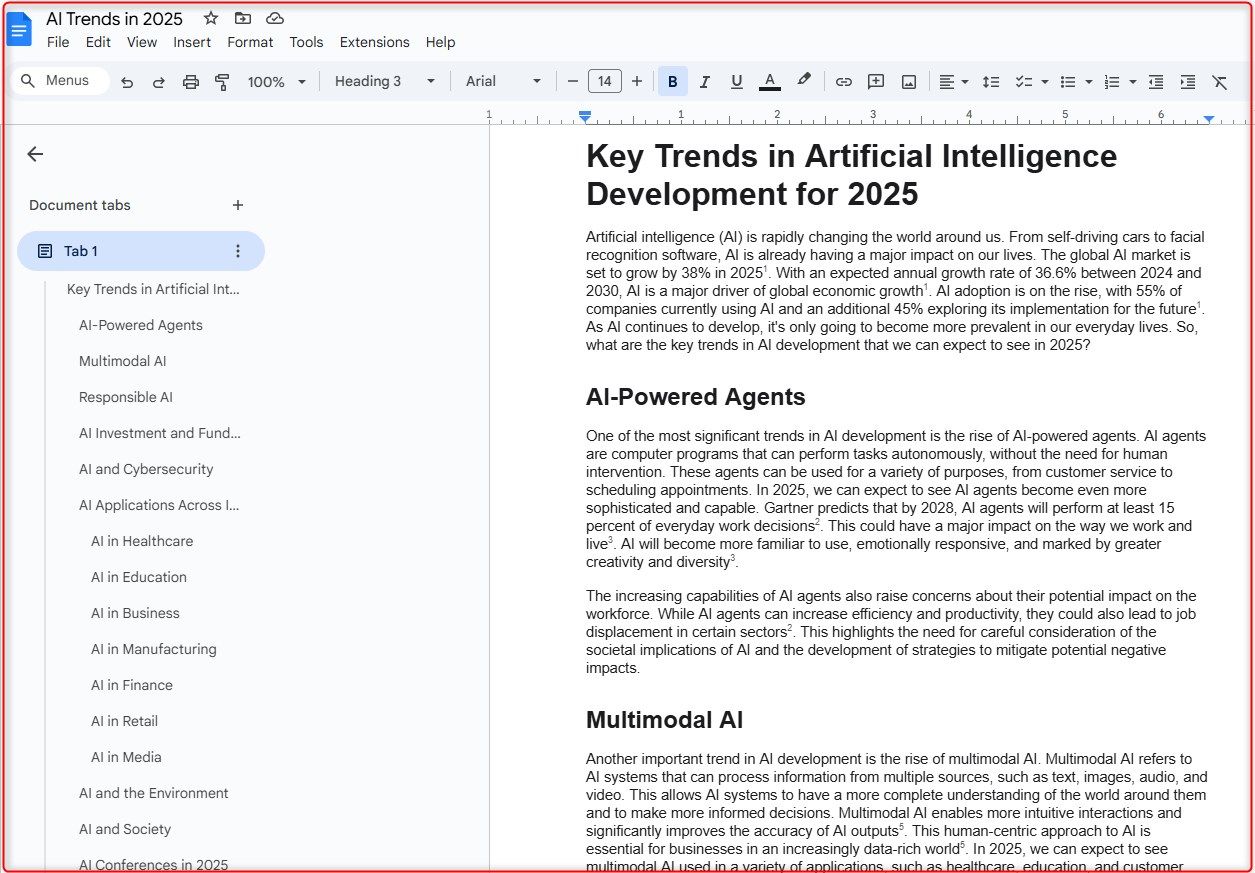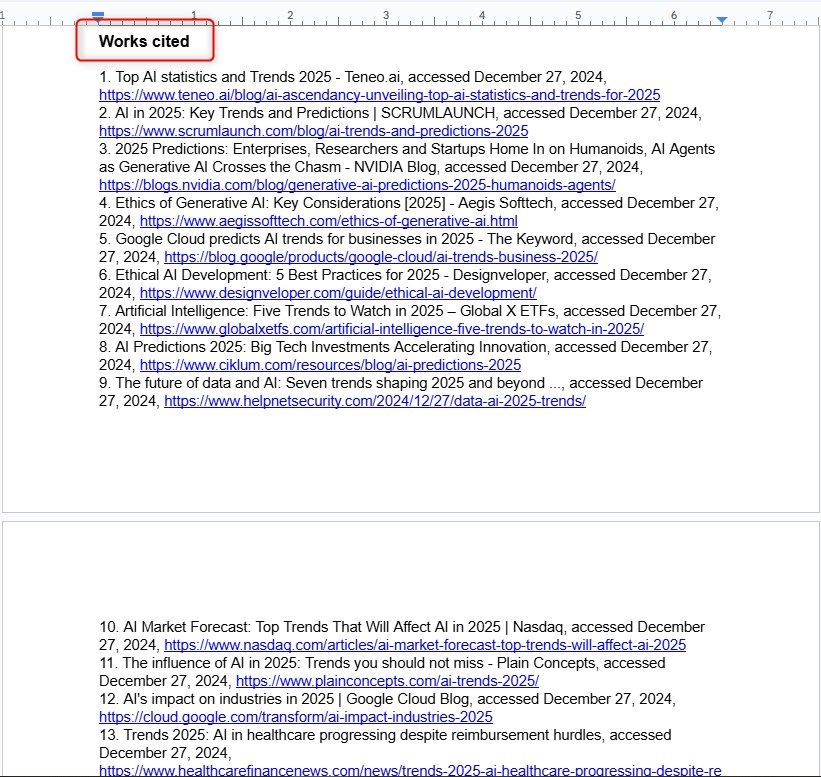Summary
- The Deep Research model combines Google’s Gemini AI to research and generate detailed reports, potentially saving research time.
- The model can be accessed by Gemini Advanced subscribers on the web interface for $20/month in English only.
- Deep Research generates detailed, well-formatted reports quickly, but still requires human analysis.
Google has launched Deep Research, available for Gemini’s advanced subscribers, which uses Gemini to scan multiple sources and create detailed reports. Sounds impressive, but is it good enough to replace homework forever?
What Is Deep Research?
Deep Research is an AI-powered research assistant that combines Google’s search capabilities with Gemini’s advanced AI reasoning. This feature allows you to explore complex topics and generate comprehensive reports within minutes, potentially saving hours of manual research time. It claims to search the open web to deliver comprehensive, organized reports from a range of sources. But how good of a job does it really do?
How to Use Deep Research
To access Deep Research, Gemini Advanced subscribers can visit the Gemini web interface (on desktop) and login.
Select “1.5 Pro with Deep Research” from the model drop-down menu:
Next, enter your research question or topic, review and approve (or modify) the multistep research plan, and click “Start research” to initiate the process.
It’s worth noting that Deep Research is currently available only in English and for Gemini Advanced subscribers, priced at $20 per month, but
you can also get a trial
.
Putting Gemini Deep Research to the Test
To evaluate Deep Research’s capabilities, I decided to test it with a cutting-edge question that wasn’t too complex:
“What are the key trends in artificial intelligence development for 2025?”
It immediately puts together a research plan with some key areas it plans to research and states that it can have it ready in a few minutes. I was quite surprised by the comprehensiveness of the research plan and the speed it took to generate it. I clicked “Start research:”
It starts by researching the question, going through 28 relevant results:
It completed my research and created a detailed report in a couple of minutes. The model encourages you to ask follow-up questions or request changes. You can also open it up in Google Docs, which I did:
The final report was relevant and current, including reputable sources (e.g., Gartner) and it was well-formatted and addressed all the key sections that were mentioned in the research plan:
How Did It Perform? (The Results)
The report covered AI-powered agents that will continue to become more capable and perform tasks without the need for human intervention, including the trend of multimodal AI (AI systems that can process information from numerous sources) such as Gemini’s Deep Research. It also covered AI investment and funding trends which are expected to grow in 2025, cybersecurity concerns with AI, and AI applications across industries from healthcare to manufacturing.
It did follow a broad and balanced approach, including the ethical concerns raised by AI and what we should expect to see moving forward. What I didn’t expect to see was a list of AI conferences that have been scheduled for 2025. I think prompting the AI with such a broad question allowed the chatbot to be a little more creative. The report included a mix of quantitative data (e.g., AI investment statistics, AI adoption statistics in the business world, and the growth of AI data centers with global electricity consumption projections) and qualitative analysis (AI trends for multiple industries), all with reputable citations.
Deep Research didn’t just compile facts; it synthesized information to provide insights into trends and potential future scenarios, alongside potential ethical considerations, and the potential impact on the workforce if more jobs are replaced by AI. It also mentioned how AI is being used to detect and prevent cyberattacks by improving existing security systems, how cybercriminals are using AI to do the opposite.
The platform was easy to use and very straightforward. I didn’t have to tinker with prompts and it was very intuitive. The waiting time for the research and report to get generated was really quick. I can personally see myself using this again to learn more about different topics really fast. Who has time to go through multiple websites these days?
Responding to Follow-Up Questions
To see how the chatbot would respond to follow-up, I asked it a couple of questions, one of them being:
“Regarding AI in Media, can you tell me how AI could be used to potentially automate video editing?”
It produced an output mentioning the different video editing aspects that AI can automate as well as the AI video editing tools that are currently available. As always, it links to all sources and relevant content.
Limitations of the Deep Research Feature
While the Deep Research model did impress me quite a bit, I’d say that overall it lacked a nuanced understanding that comes from reading actual academic papers or doing your own primary research, which is what I expected. You should also be wary of potential bias. All the sources were also mainly from English-language publications, so there may be other perspectives that we’re missing.
Potential Use Cases for Students
I don’t believe homework is quite dead yet, but I think using Deep Research to get organized and gather information is a good start. For literature reviews, you can generate a quick overview of existing research on a topic to get an overview and see if there are any gaps in the sources available. Project planning is another one. Since Deep Research can provide well-structured research plans, it can help you get organized for your research project, and give you a foundation to start with.
As with all AI-generated content, you need to make sure all the information is factual as chatbots are prone to hallucinations. All information gathered should be fact-checked with the appropriate resources. Additionally, while it appears to be a powerful tool for gathering relevant information and doing a bit of analysis, you’ll still need to critically analyze and put together the main points. Remember, AI should supplement critical thinking, not replace it.
How Does It Compare to Other AI Models?
What sets Deep Research apart from existing AI tools is its ability to mimic human research skills. It doesn’t just provide a simple answer but does an investigation into various sources that it generates into a report and also initiates new searches based on what it has learned. This process is repeated several times to result in a more comprehensive output.
If you want to compare Gemini’s Deep Research tool to OpenAI’s o1 model (which is their advanced reasoning model), both are powerful advancements in AI technology. However, Deep Research appears to focus more on web-based research and report generation, while OpenAI’s o1 model is focused on improved reasoning and complex problem-solving across domains, including scientific, mathematical, and coding challenges.
While Google’s Deep Research feature for Gemini Advanced is powerful and impressive in its ability to carry out a multistep research process and provide well-structured reports in minutes, it’s not the end of all homework. Remember, it’s not a replacement for original thought and human creativity, so use it responsibly. You never know, maybe one day AI will replace homework with AI scientists.

